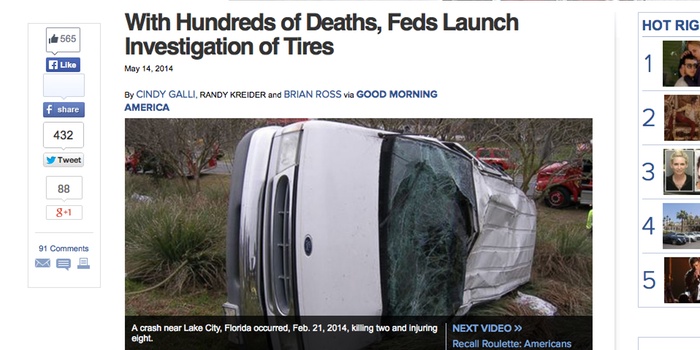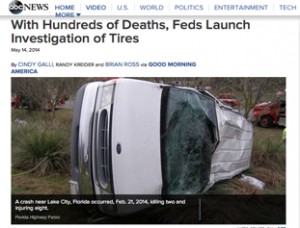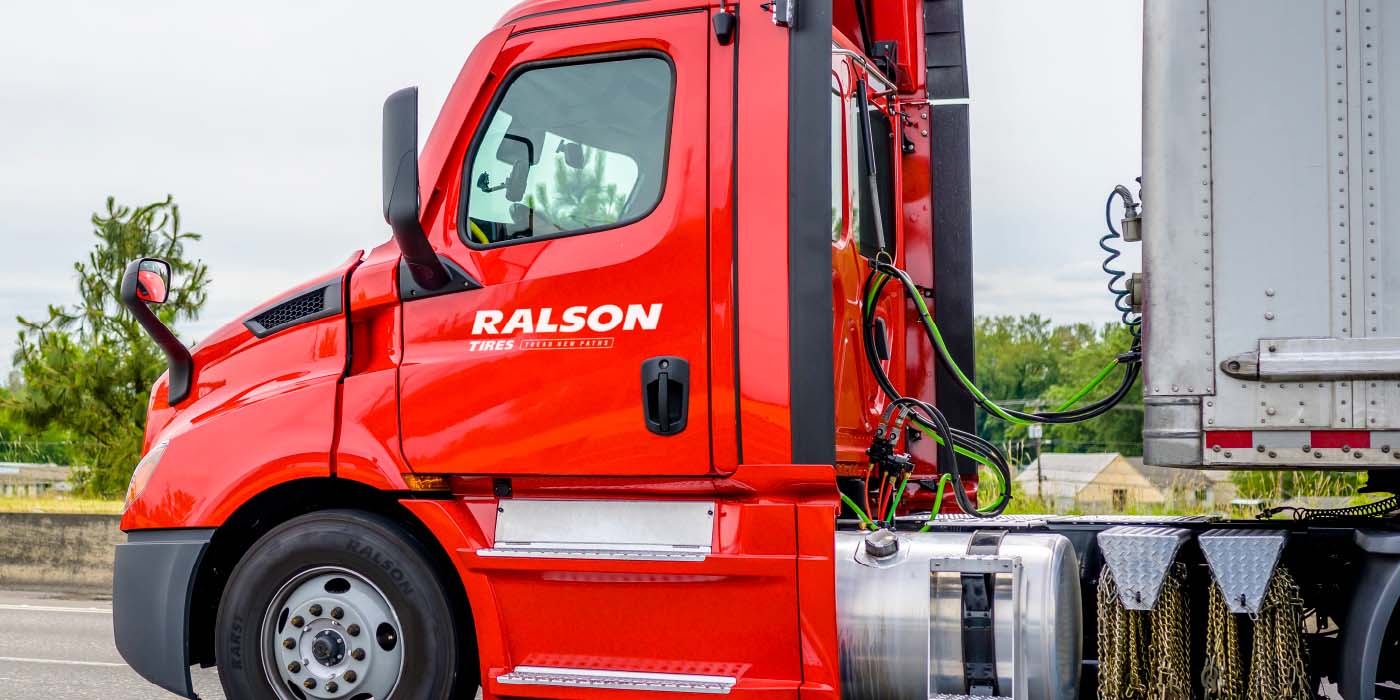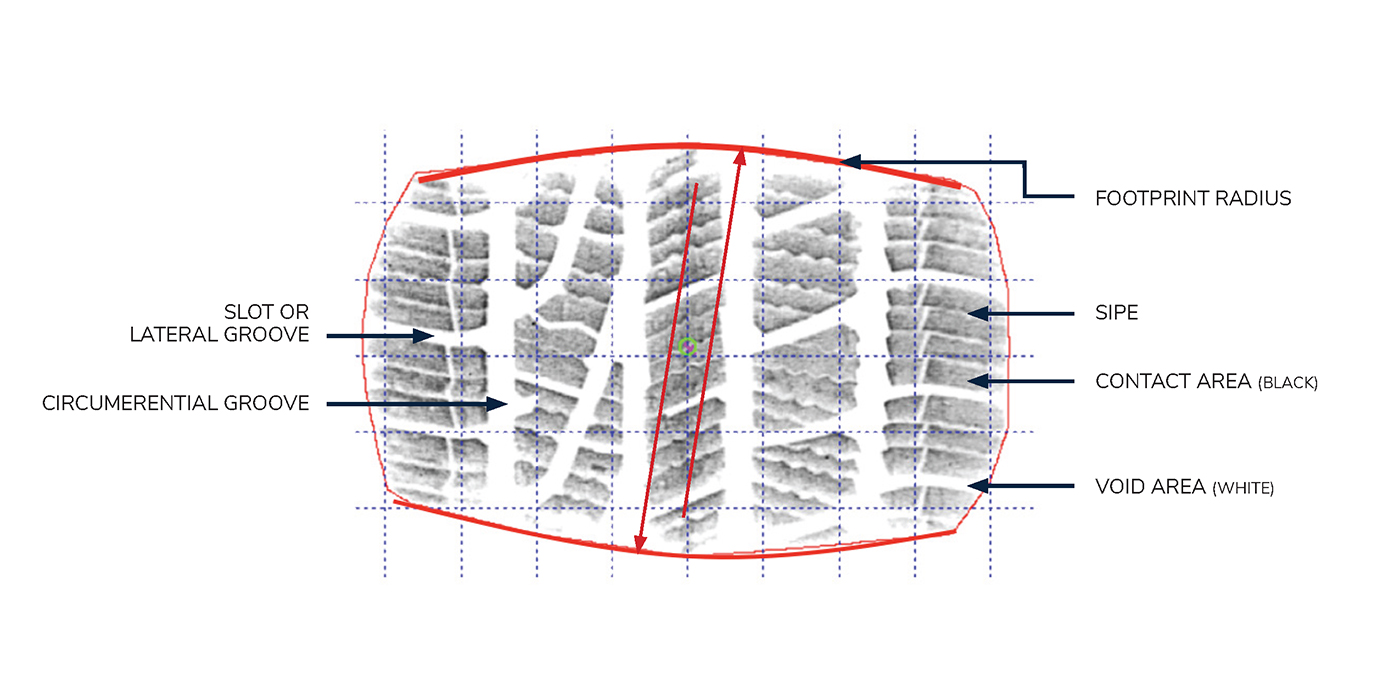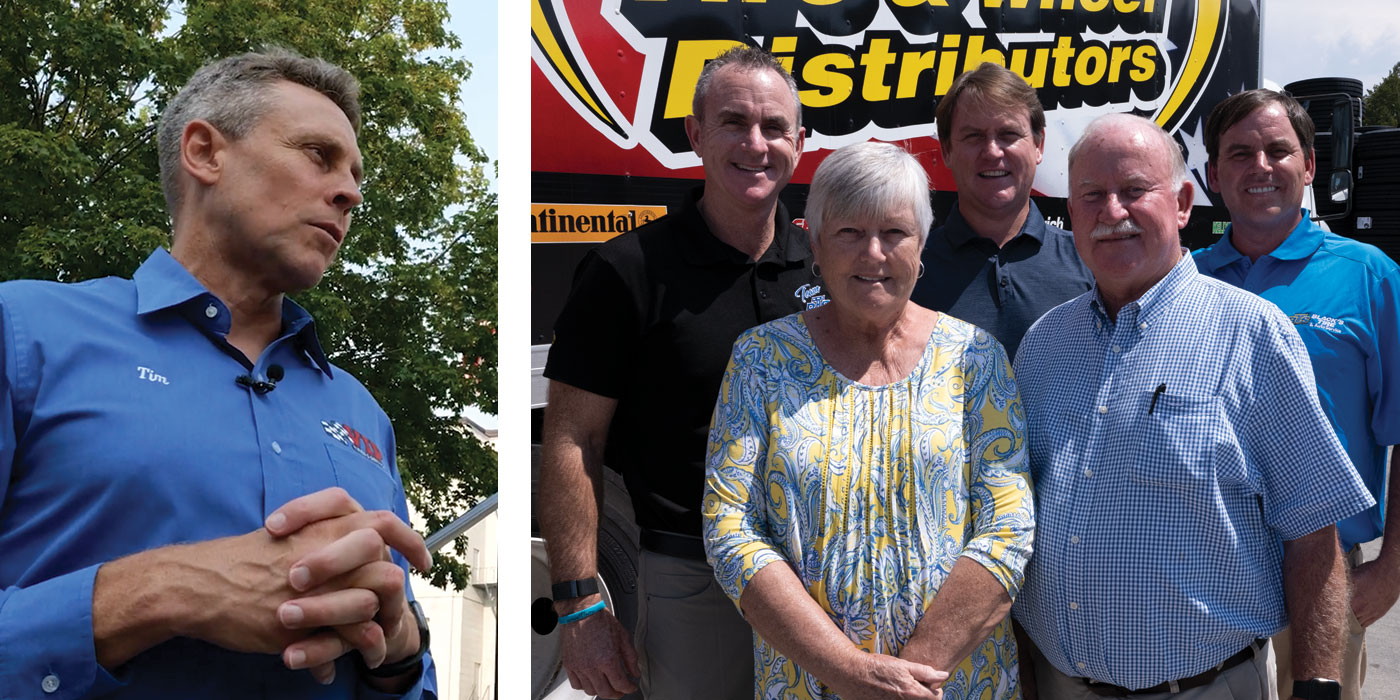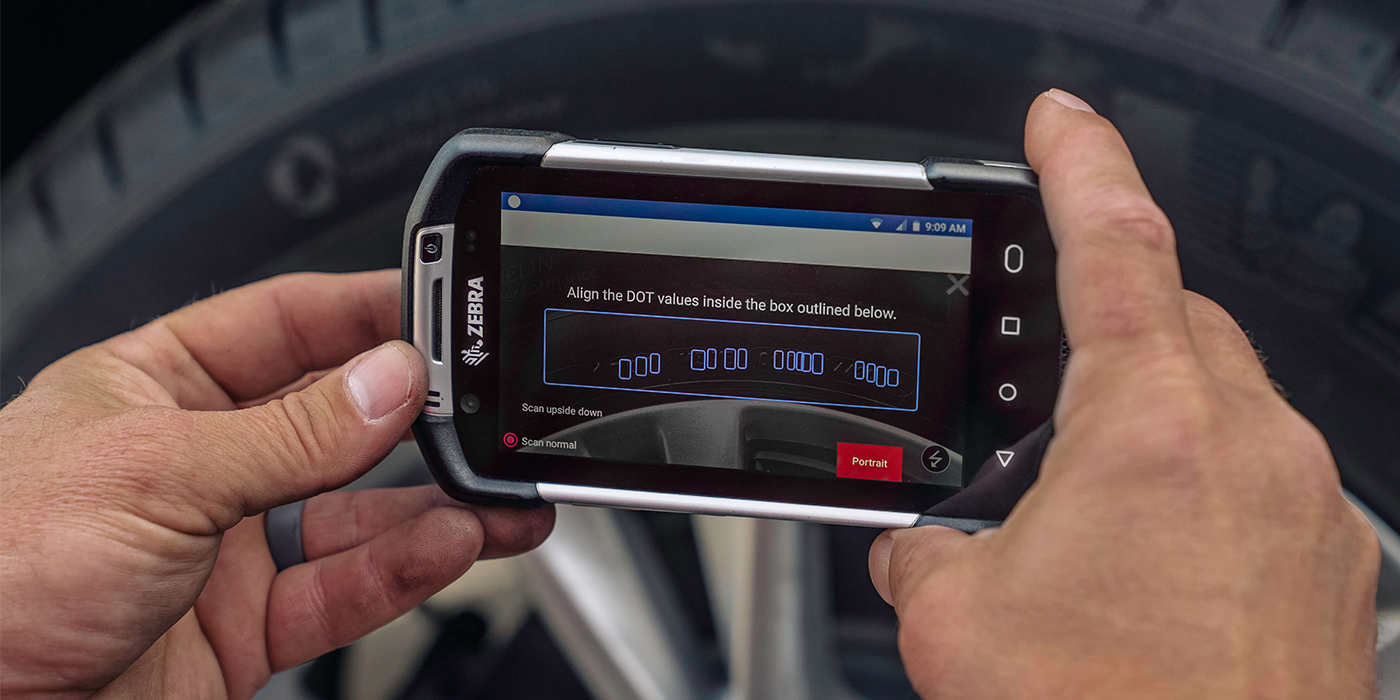To be “successful” (re: get high ratings) in TV “news,” reporting requires of a “journalist” (re: pretty face) three important things – 1) establish your premise, 2) do absolutely no advanced research to know your subject and 3) never, ever, ever waver from that premise.
No TV journo does a 9:15 segment on “tires.” They do a three-segment national network “investigative report” on “killer tires that are on the loose and probably on your family car!!!!!!”
Yesterday, ABC News reminded me why American TV news programs are so very, very bad. Investigative “reporter” Brian Ross again took up the cudgel on behalf of Sean Kane, the well-known plaintiff attorney research firm operating under the guise of being a “safety consultant.” It was Kane who directed Ross to the entire tire age question some 12 years ago, creating a PR problem the tire industry still hasn’t figured out.
My position on that has been well-stated – and neither the RMA nor TIA agree – but that is not the point here.
The point is we took another gut shot.
The shorter earlier pieces – one airing on Good Morning America and the second during a slow news day on World News with Diane Sawyer – were all about the ratings (it is sweeps month, after all), so dozens more tuned in, frightened to death by the crazed promos and foreboding “headlines.”
The last segment – the 9:15 piece – aired on Nightline last night. More precisely very, very early this morning (it runs at 12:35 am ET). You can watch the Nightline version here:
http://abcnews.go.com/Blotter/hundreds-deaths-feds-launch-investigation-tires/story?id=23712162
Picking through the rubble of Mr. Ross’ premise and follow-through, we first see video from unnamed vehicle test tracks, some date coded to the year 2000, where “professional test drivers” lost control of their outrigger-rigged test SUVs when a tire failed. It was unclear whether they were testing the tires to the point of failure or if the test tires magically failed on their own.
Kind of an important difference.
Then the story moved to scenes from on-road accidents – a pair of older Ford Explorers and one 15-passenger Econoline church van – where failing tires seriously injured and/or killed passengers. One paralyzed woman won judgment from Walmart because they rotated into service her spare tire, which just happened to be a recalled model (brand and size unnamed, but we can all make the connection).
Ross’s premise is then revealed: “Several hundred people a year are killed in accidents in which tires are a factor.”
Read that sentence carefully. It says everything you need to know, but absolutely nothing factual or concrete in the least.
He continues, after a brief dramatic pause, to note that those “factors” can include “punctures, underinflation and poor maintenance” – three things clearly the responsibility of the driver. But that’s getting away from the premise, and the fact that the three issues make up the vast majority of said “factors.”
Ross steers his premise boat back onto course by finishing with “in some cases” said “factors” include “tires that had been recalled because of safety defects” and motorists “apparently never got word of the danger.”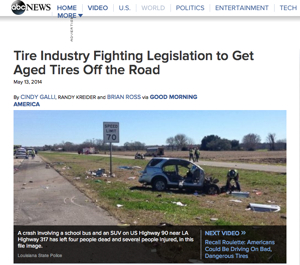
And then we get to real news here: the U.S.’s “archaic and badly flawed recall system.”
Sean Kane chimes in that there is “no database” for consumers to check to see if their tires have been recalled. Not true, actually. The NHTSA website provides such information – provided you have three degrees in computer science from MIT and the patience of Job; like all government websites – designed by ill-suited committees – it’s absolute crap.
Pure rubbish. I have spent (wasted) many an hour parsing through that site to find recall info. I’d get there eventually.
What Kane wants, though, is a simple look-up database where Johnny Driver can drop in his tires’ ID numbers – the infamous TINs – and find out instantly if there is a problem. I would suggest that would be a great project for Mr. Kane to undertake, even if it doesn’t pay as well as being a “safety consultant.”
Still, somebody should do that. How hard can it be? If we know the TINs of a batch of recalled tires, it should be a simple matter to add them to a consumer-friendly look-up database. We mastered that database thingy to help drivers mate vehicle make/model/year to specific tire sizes, right?
Anyway, ABC shows scenes of recalled tires being found at a Costco store and at Brown’s Discount Tires in Atlanta, where a “salesman” is shown picking through an pile of obviously used tires to find that one recalled Firestone P235/75R15 – as if by magic. From the looks of things, Brown’s Discount Tires’ inventory featured few – if any – new tires.
If you go looking in the most obvious place, you will find what you seek. Brian Ross knows that.
It is then revealed that the National Traffic Safety Board has taken up a “first of its kind special investigation” into the matter. Ross offered no explanation as to what the NTSB and Donald Karol, its director of highway safety, were investigating, when the investigation started, why it was investigating any tires, what the ultimate goal is for such an investigation, or provided any timetable for the completion of the probe and when its report would be available.
Most notably, we should all be curious as to how only ABC News and Brian Ross even knew of such an investigation. Karol is a very high ranking official at NTSB, so his attention to this matter alone is major news. Yet, I have never heard of such an investigation. Huh?!?
For the record, the NTSB website lists the agency’s charter thusly: “The National Transportation Safety Board is an independent Federal agency charged by Congress with investigating every civil aviation accident the United States and significant accidents in other modes of transportation – railroad, highway, marine and pipeline. The NTSB determines the probable cause of the accidents and issues safety recommendations aimed at preventing future accidents. In addition, the NTSB carries out special studies concerning transportation safety and coordinates the resources of the Federal Government and other organizations to provide assistance to victims and their family members impacted by major transportation disasters.”
These are the guys brought in when a plane crashes or trains collide or there are issues with really large ships or leaky pipelines. Seems odd that the NTSB and not the DOT or NHTSA would be holding such a “special investigation.”
Dan Zielinski, vice president of communications for the RMA, sat for a 45-minute interview with Ross, gaining less than two minutes of on-air time in total to try to answer the kinds of questions that would require any human fair access to office files.
“How many tires have been recalled in recent years?”
“How many of those have been turned in?”
Ross failed to mention that the RMA does not represent all tiremakers selling – or recalling – tires in the U.S. Zielinski tried to, but never got the chance after final edit.
ABC segment producers trolled the NHTSA website and in a record-setting “15 minutes” counted 5,176,852 “tires” that have allegedly been recalled since the start of 2004. Notice I wrote “tires” as ABC made no distinction between consumer tires or commercial units.
Still, let’s hold that 5.2 million figure up against this: over the 10 years between the start of 2004 and the close of 2013, the RMA showed that more than 2.1 BILLION new CONSUMER TIRES had been shipped across the U.S.
Recalled tires, it seems, made up 0.246% of all consumer tires shipped over the last decade.
Hhhmmmm….
Startlingly, even as Zielinski did not offer a number as to how many recalled tires were returned, Karol apparently held the answer. When asked by Ross what percent of recalled tires were actually turned in, Karol responded: “To the best of my knowledge, its like 20% or lower.”
Wow … ABC News then revealed that Karol’s guess meant that some “four million” recalled tires were still on the road! Ugh.
When asked about the state of the tire recall system in the U.S., Zielinski admitted (rightfully, I think) that the recall and notification system “needs improvement.”
The earlier segments raised the “issue” of how “difficult” it is for math-averse Americans to “decode” TINs to discovered when their tires were produced. The listing of week and year is too hard to sort out, it seems, because taking the first two digits in the date code and dividing that by four is just too much work. But Ross doesn’t give Zielinski the opportunity to explain why the TIN system works best, fixating rather on how hard it is for the “average American driver” – who already pays virtually no attention to their tires – to discern how old their tires are.
Again, waffling back and forth between tire age and recalled tires.
Without being able to designate a production week, tiremakers would be forced to not only retrieve much larger groupings of potentially flawed tires, they would have to pick through a larger database of production data to pinpoint and correct any problems. That only leads to slower reaction and then action to pull back problematic tires.
It turns out, in Ross’ own words, that of all the ABC affiliate stations across America that he contacted about joining his witch-hunt, only nine responded to the call. But seven of those stations reported that the stores they visited “seemed to be doing a good job” and that they found no recalled tires for sale. It was just one Costco and good old Brown’s Discount Tires.
So what are we gonna do about it?
Certainly the matter of voluntary tire registration should be reconsidered. Those of you old enough to remember will remember what a convoluted, negotiated mess that was. We got voluntary tire registration in 1970 when NHTSA ordered tiremakers and retailers to register all tires sold. This was done in order to facilitate faster, cleaner tire recalls.
According to tire registration experts CIMS, “The original mandate required tire manufacturers to mold identification numbers into tire sidewalls and to keep a record of the name and address of the first tire purchaser.”
That hasn’t gone all that well, despite the efforts of CIMS and the prodding of tiremakers. The entire registration process is often left to the unwitting consumer, much like product registration cards for that new blow drier or blender that are never filled out.
So perhaps we can consider something better. Maybe in addition to the TIN, ID numbers and date codes could also appear on sidewalls in the form of easily scanned barcodes. Then any tire seller could quickly scan the TINs and enter customer data in just a few keystrokes.
The barcode, then, could also make it possible for curious consumers to use a smartphone app to determine the manufacturing date of their “new” tires.
And perhaps we need to take a good hard look at the wholly unregulated used tire business, which requires no testing or verification or registration of products sold to drivers. If Brown’s Discount Tires has a long-ago recalled Firestone tires, where else might they lurk?
Certainly no tiremaker supports that “market,” yet they all seem to turn a blind-eye.
In the end, though, we need to stop allowing TV hacks and “safety consultants” to dictate our narrative. We have a great story to tell, but like all industries, we have flaws that require attention, as painful as that may be sometimes.
We need to fix our flat tires, and then start doing a better job telling the real story.

